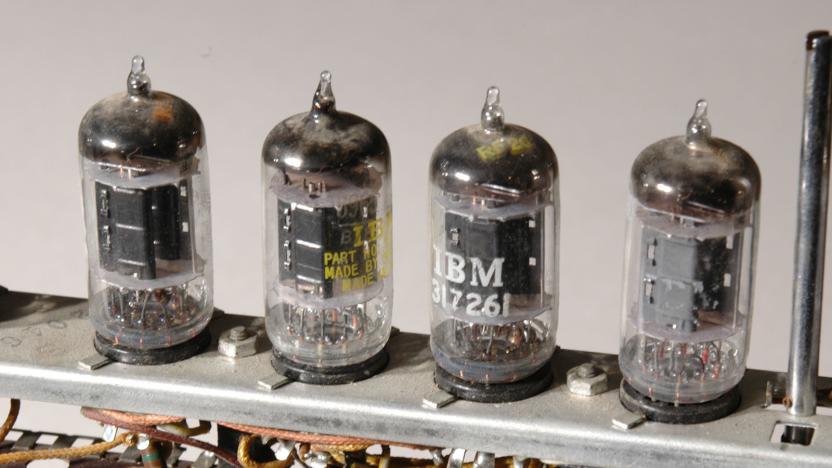JacobsSchoolOfEngineering
Latest

Scientists built a chip without semiconductors
Remember those old-timey room-sized vacuum-tube-powered computers with less processing power than your smartphone? That tech might be making a comeback, thanks to work from scientists from UC San Diego. They've built the first semiconductor-free, laser-controlled microelectronics device that uses free electrons, much as vacuum tubes do. The research could result in better solar panels and faster microelectronic devices that can carry more power.

Future wearables could use magnetic circuits to self-heal
Smart clothing might be huge, except for one problem: The printed "ink" electronics are delicate, so you can break them just by stretching the wrong way. However, researchers from the Jacobs School of Engineering have developed a self-healing magnetic ink that can repair multiple cuts in as little as 50 milliseconds. That could eventually yield batteries, electrochemical sensors and wearable electronic circuits that fix themselves autonomously, making the smart textile industry more feasible.

Researchers create algorithms that could help lithium-ion batteries charge two times faster
Researchers at the University of California San Diego have devised new algorithms that could cut lithium-ion battery charge times in half, help cells run more efficiently and potentially cut production costs by 25 percent. Rather than tracking battery behavior and health with the traditional technique of monitoring current and voltage, the team's mathematical models estimate where lithium ions are within cells for more precise data. With the added insight, the team can more accurately gauge battery longevity and control charging efficiency. The group was awarded $415,000 from the Department of Energy's ARPA-E research arm to further develop the algorithm and accompanying tech with automotive firm Bosch and battery manufacturer Cobasys, which both received the remainder of a $4 million grant. Wondering if the solution will ever find its way out of the lab? According to co-lead researcher Scott Moura, it'll see practical use: "This technology is going into products that people will actually use." Update: UC San Diego reached out to let us know that they were awarded $415,000 (not $460,000 as previously noted) out of a grant totaling $4 million (not $9.6 million), split between Bosch and Cobasys. We've updated the post and the press release below to reflect the correct figures.

Researchers use sensors to find the perfect surfboard, Gidget still looking for that perfect bikini (video)
Surfing and science are something of an odd mix, but we've seen time and time again that the two subjects to together like, well, salt and water. The latest high-tech stick to hit that briney mix comes from a team at UC San Diego, who outfitted a board with eight sensors on the bottom that measure the speed of the water as it rushes beneath. All are controlled by a waterpoofed computer embedded in the nose, which transmits data wirelessly to an Eee PC left sadly on the beach while its partner splashes around in the waves. The goal is to attempt to determine what level of flex is optimal and, once determined, to create the ultimate board and rule the world... the surfing world, at least.


